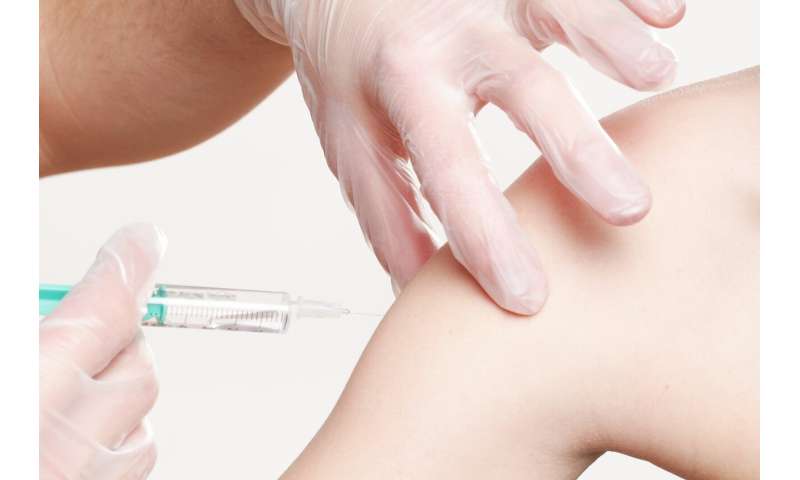
A survey of U.S. adults showed that as local case counts of a hypothetical disease increased—indicating increased risk of infection—the proportion of people willing to receive a vaccine for the disease also increased. Bert Baumgaertner of the University of Idaho, Moscow, United States and colleagues present these findings in the open-access journal PLOS Medicine.
People may be hesitant to receive a vaccine for several reasons, such as lack of confidence in the vaccine, lack of convenient access to the vaccine, or low perceived risk of contracting the disease. A better understanding of these reasons could aid efforts to mitigate disease spread. However, links between vaccine hesitancy and perceived risk of disease have been unclear.
Now, Baumgaertner and colleagues investigate the concept of vaccine propensity: how willing a person is to vaccinate according to their perceived risk of infection, assuming vaccine confidence and convenience remain unchanged. In 2018, the researchers explored vaccine propensity with an online survey that presented hypothetical disease scenarios to about 2,500 U.S. adults and asked how high their local community’s case count would need to be before they would be willing to vaccinate.
The survey results showed that a greater number of local cases (indicating greater risk) was associated with an increase in the proportion of the individuals willing to vaccinate, increasing from approximately 50% to 90% as local case numbers went from zero to 100. Participants randomly received different disease scenarios, and vaccination willingness was greater for participants who were given information about the potential deadliness of a disease, versus those told how severely it could impact daily life.
Older participants, those with high incomes, and men were generally more willing to vaccinate. Participants who leaned farther towards a conservative political ideology showed less willingness to vaccinate than those who reported being liberal. Moderates tended to align with conservatives’ willingness at lower risk levels, but as risk increased, the proportion of moderates willing to vaccinate aligned more closely with that of liberal participants. The authors note that although education level of participants generally matched that of the general population, the survey was designed to be representative of the U.S. population in terms of age, sex, income, race/ethnicity, and geographic region, and does not include individuals who do not have internet access.
Source: Read Full Article


